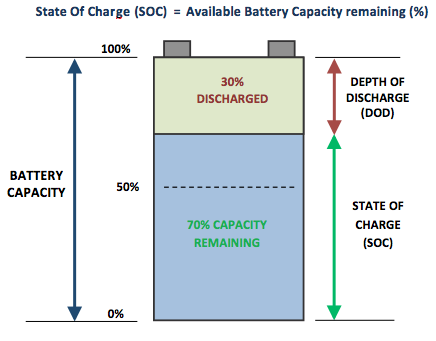Lithium Batteries VS Lead Acid batteries
|
Over the last few years, lithium batteries surged in popularity and quickly overtook lead-acid batteries as the preferred option for home energy storage systems, but that does not mean the lead-acid battery is dead! Lead-acid battery technology is still advancing with the release of high-performance tubular Gel batteries from companies such as BAE and Wisdom Power, and advanced lead-carbon batteries from Wisdom Power and GS Yuasa. In this review, we selected two of the more popular lithium (LFP) batteries from leading manufacturers Simpliphi and BSLBATT against the latest deep-cycle lead-acid batteries. A direct comparison is not easy as each battery type behaves differently depending on the rate of discharge, depth of discharge and cycle life required. The full battery comparison criteria are explained in the detailed complete solar battery review. Lithium batteries used for home energy storage generally use lithium iron phosphate (LiFePO4 or LFP) cells due to the lower cost and long cycle life, however, several well-known manufacturers such as Tesla and LG chem use Lithium NMC cells which you can read more about here. For this review, we will be focusing on Lithium LFP batteries from leading US manufacturer Simpliphi and the popular Chinese manufacturer BSLBATT. Battery Capacity and depth of discharge Battery capacity is measured in either Amp Hours (Ah) or kilowatt hours (kWh). The amount of energy used is taken as a percentage % of total capacity and known as the depth-of-discharge or DOD, refer to the diagram below. To convert Ah to kWh simply multiply the battery Ah rating by the total battery bank voltage. For example a 24V lead-acid battery bank made up with 12 x single cell (2v) 600Ah batteries: 12 x 2V x 600Ah = 14,400Wh. This is then divided by 1000 to convert to kilowatt-hours - 14.4kWh total capacity. As a general guide lithium LFP batteries are designed to be discharged up to 90% total capacity while the traditional lead-acid (gel & AGM) batteries are generally not discharged more than 30-40% unless in emergency backup situations. Advanced tubular gel and lead-carbon batteries are more durable than traditional gel and AGM batteries and can sustain much greater depth-of-discharge with up to 70% available, but this can also reduce battery life significantly if deep discharges occur often. This review does not include unsealed or flooded lead-acid batteries as they require high levels of maintenance and any cost savings can be outweighed by regular maintenance work required throughout the life of the battery. As highlighted in the full solar battery review lithium batteries have many advantages over traditional lead-acid especially in regards to usable capacity, weight, storage space, and life cycle performance. Advantages of Lead-acid batteries Lead-acid battery technology is a well-proven technology as it has been around for over 100 years and is extremely safe and reliable when designed and installed correctly. For larger off-grid systems lead-acid batteries are still one of the most trusted options and a correctly designed system typically can last 10-15 years or even longer. Unlike lithium batteries, lead-acid battery banks do not have a specific cut-off point at a certain depth of discharge so in an emergency situation they can continue to provide power until the voltage reaches the inverter cut-off, however, this will reduce battery life to some degree. Deep cycle lead-acid batteries have been around for decades but more recently advanced tubular gel deep cycle batteries have taken lead-acid further with up to 15-year life with no servicing. There are many well-established companies producing very high-quality tubular gel lead-acid batteries, such as Wisdom Power, Hoppecke and TAB. We selected the well known China BULLSBATTERY to represent the sealed lead-acid batteries in this comparison. Advantages of Lithium batteries The most obvious advantage of lithium batteries is the compact size and weight due to the extremely high energy density. Generally speaking, a lithium LFP battery is about 20% of the size and weight of an equivalent lead-acid battery which is helped by the much higher depth-of-discharge available in a lithium battery. Lithium battery systems are generally made up of smaller easy to handle modules of sizes from 2kWh to 4kWh which gives much more flexibility when sizing a system. This also enables additional capacity to be added if needed at a later stage. When under load the voltage is a drop of lithium is very low and will generally not fluctuate more than 1 volt* from nominal even under high load (*48V). This is due to the much lower internal resistance compared to lead-acid batteries. By far the biggest advantage of lithium batteries is the very low losses during charging and discharging resulting is very high round-trip efficiency。 |














